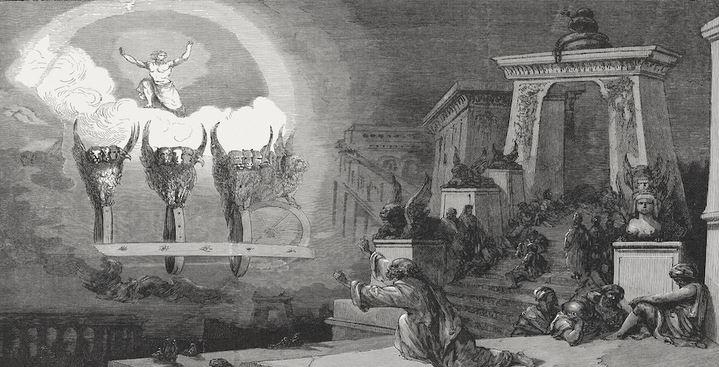Throne Mysticism

Throne Mysticism:
Throne mysticism typically refers to a form of mystical theology or vision, where the mystical experience involves visions of the divine throne or the "Throne of God." This can be found in various religious traditions, such as Christian mysticism, Jewish Kabbalah, and Islamic mysticism (Sufism).
In these traditions, the throne often symbolizes the divine presence or sovereignty, representing a link between the earthly and the spiritual realms. Those who experience throne mysticism may report encountering vivid imagery, such as the Divine Throne in heaven, which can be surrounded by angels or other heavenly beings.
Examples of Throne Mysticism:
-
Christianity:
-
In the Book of Revelation, the Apostle John describes a vision of God's throne in heaven, surrounded by twenty-four elders and four living creatures. This is a powerful image of God's majesty and divine sovereignty.
-
Christian mystics, like St. John of the Cross and Mechthild of Magdeburg, sometimes used the concept of the throne in their writings to represent the union with God, where God is depicted as seated on a throne of glory.
-
-
Judaism and Kabbalah:
-
In Jewish Kabbalah, the Merkabah (or Chariot Mysticism) plays a role that is similar to throne mysticism. The Merkabah describes a vision of God's chariot throne, as seen in the visions of Ezekiel and other mystical texts. These visions focus on the divine throne or "throne of glory" and symbolize spiritual ascent and communion with God.
-
The Kabbalistic Tree of Life also reflects the journey toward spiritual enlightenment, where the divine throne represents God's presence at the highest levels.
-
-
Islam and Sufism:
-
In Islamic mysticism (Sufism), the concept of the divine throne (Arsh) is central. It is considered the highest throne upon which Allah is believed to sit in His sovereignty. Sufi mystics sometimes experience visions that bring them into proximity with the divine throne, symbolizing divine enlightenment and union with Allah.
-
Sufi poets like Rumi often described mystical experiences in terms of ascending toward or communing with the divine throne, illustrating deep spiritual union.
-
Common Themes in Throne Mysticism:
-
Divine Sovereignty: The throne represents God's supreme authority and power. Encountering the throne is often a symbol of approaching the presence of the divine.
-
Spiritual Ascent: In many traditions, throne mysticism symbolizes the soul's journey toward God or enlightenment. It's about rising through different spiritual realms toward the highest, most sacred connection with the Divine.
-
Heavenly Imagery: The throne is often surrounded by celestial beings, such as angels, and is depicted in vibrant, awe-inspiring terms, with intricate visions of light, color, and profound peace.
Conclusion:
Throne mysticism is an expression of mystical encounters with the Divine, where the throne represents the ultimate point of spiritual contact with God's presence. It has rich roots in a variety of religious traditions and is a powerful symbol in mystical literature, often representing both the awe and intimacy found in these divine experiences.

